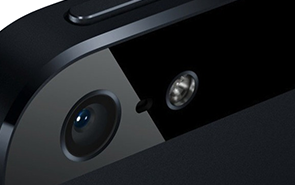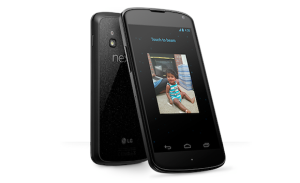 Few tools of modern technology have become as prevalent as the cell phone, which allows you to be in touch from almost anywhere, almost all the time. And you can do more than just talk: Today's phones let you send and receive email and text messages, surf the Web, and play music and videos. Sifting through the sea of service plans and handsets can be difficult, but we'll walk you through what you need to know to get the phone and the service plan that are right for you.
Few tools of modern technology have become as prevalent as the cell phone, which allows you to be in touch from almost anywhere, almost all the time. And you can do more than just talk: Today's phones let you send and receive email and text messages, surf the Web, and play music and videos. Sifting through the sea of service plans and handsets can be difficult, but we'll walk you through what you need to know to get the phone and the service plan that are right for you.
If you don't have to own the latest and greatest smartphone, there’s no time like the present to buy a new one, whether it be the newest iPhone, an Android superphone, or a business-friendly Windows Phone. Before you hit the stores, however, do a bit of research and read this guide so that you'll know exactly what to look for.
Features to Consider
When you're shopping for a phone, you can do some simple hands-on tests in the store to ensure that the handset has everything you need.
Call quality: What good is a phone if it can't make calls? Some of the simplest, most bare-bones feature phones offer the best call quality, and some fancy smartphones offer dismal calling. When evaluating phones, be sure to make a few test calls. In our hands-on tests, we generally place some calls from a quiet room and several others in a noisy environment. You might not be able to replicate such tests indoors, but try your best. Listen for static, tinny voices, and interference. Ask the people you call if they can hear a disruptive amount of background noise.
Design: Your choices range from phones with large touchscreens to slider-style handsets with full-QWERTY keyboards. Whichever type of phone you select, check to see if it's comfortable to hold against your ear, if you can hear callers without constant adjustment, if you can use the phone with one hand (or by scrunching your neck and shoulder), if it fits comfortably in your pocket or bag, and if it's durable enough to handle some rough treatment. A solidly built phone should be able to withstand getting banged around in a handbag or pocket, as well as a bit of moisture and a short-range drop. You should consider investing in a case or display protector as well—especially if you’re somewhat accident-prone.
Operating system: If you're looking to do more than make calls and send text messages with your phone, consider the platform that it runs on. The mobile operating system you choose will greatly affect your phone's capabilities. The most popular platforms are Google's Android(found on multiple devices), iOS (found only on iPhone models), Blackberry OS(found on BlackBerrys of various designs), and Microsoft’s Windows phone. Each operating system has its own advantages and disadvantages, so familiarize yourself with all of them before settling on one.
Display: If you intend do a lot of Web browsing or movie streaming, make sure that the screen is big enough for you to take full advantage of the phone's features. For surfing the Web or editing Office documents on your phone, a screen that measures less than 3 inches diagonally will feel cramped.
Screen resolution: The higher the resolution, the better the screen will look—an important factor if you plan to watch videos or view photos on your phone. A high-resolution display is desirable if you plan to do a lot of reading on your phone, since text will look much sharper on it and be easier to read.
If your phone lets you adjust contrast and brightness (including backlighting), you can make text and graphics easier to view in well-lit places, and you can also save battery life in a pinch.
4G support and availability: 4G networks offer data speeds that are vastly superior to those available on a 3G network. You can expect to see average download speeds of around 6 to 9 megabits per second while connected to a 4G network—though of course those speeds vary depending on your location and on reception quality. You'll encounter two kinds of 4G networks when buying a new phone: LTE and HSPA+. Verizon, Sprint, and AT&T have their own LTE networks, while T-Mobile uses an HSPA+ network that delivers comparable speeds.
4G is pretty much the norm on smartphones these days, and you'll definitely want it on your next phone. Normally, connecting to a 4G network costs nothing extra, though the faster data speeds do mean that you can quickly hit your data cap if you aren't careful. Carriers are constantly expanding their 4G networks; but if you're leaning toward choosing a 4G-capable phone, check the relevant carrier coverage maps to confirm that your region already has 4G service.
Cameras: If you expect to take a lot of photos with your phone, you'll want to pay attention to the phone's camera specs. For mid- to high-level smartphones, 8 megapixels is now pretty much the standard. However, a higher megapixel count doesn't necessarily mean a better camera. Verify that the phone camera you're interested in has a flash (dual-LED or Xenon flashes work best); otherwise, pictures you take indoors or at night will come out looking like blurry messes. Try to take a few pictures in the store to get a clear idea of the camera's photo quality.
Most cell phone cameras also video-capture capabilities, and most midrange and high-end phones can capture high-definition 720p or 1080p video. If video is your thing, make sure that the OS provides an easy way to upload your videos to services such as Facebook and YouTube.
Many modern smartphones have front-facing cameras. These are mostly good for making video calls; but some camera apps, such as photo-booth apps, use the front-facing camera too.
Processor: Much like 4G, dual-core processors are quickly becoming the standard in phones. You can still purchase and run most phones just fine on a single-core processor—but going forward, most phones will have two or more cores. As time goes on, having a phone with a single-core processor may limit the types of applications you can run on your phone, and the types of updates it can receive.
Battery life: There’s no easy way to predict how long a phone’s battery will last. In our lab tests and hands-on evaluations, LTE phones have generally supported shorter battery lives than 3G phones have. Ultimately, however, it all depends on how much you use your phone. If you're always on your phone, browsing the Web and making calls, your phone probably won't make it through a full day before needing to recharge. If you aren't always near an open outlet, you can buy a case with a built-in wireless charger, or you can carry around an extra battery for your phone. For a complete guide to extending your phone’s battery life, check out our "How to Boost Your Smartphone Battery Life" article package.
Picking the Right Plan
While shopping for a new plan, be realistic about how you'll use your phone. If you're getting a smartphone, you'll probably benefit from getting a plan that offers at least 2GB of allotted data. Having at least 2GB of data will enable you to download apps and browse the Web without having to worry much about going over your data cap. On the other hand, if you like to do a lot of bandwidth-heavy activities such as streaming music or video, you'll be better off paying the premium for a higher data tier. One upside to getting a smartphone plan is that the carrier usually includes unlimited talk and text. The days of mobile carriers' charging users for a set number of minutes or text messages are quickly drawing to a close, though the cost of data usage is going up. Customers on AT&T and Verizon face caps on how much data they can use before extra charges or restrictions kick in. T-Mobile and Sprint offer unlimited data plans, but their networks are smaller than Verizon's and AT&T's.
If everyone in your family wants a smartphone, or if you have a lot of phones and tablets that you pay for data on, it may be worthwhile to look into shared data plans. Such plans offer unlimited talk and text, and all devices on those plans share their data from a set pool. The big benefit of having a shared data plan is that you don't have to pay for data on each device individually. If you or your family members never use more than 500MB apiece, you could save some money by paying for only the maximum data you'd use. Shared data plans also usually include tethering, which allows you to share your wireless connection with other devices such as laptops and Wi-Fi-only tablets. The biggest drawback of a shared data plan is that it can cost more if you or your family use a lot of data. Before switching to a shared data plan, it's best calculate how much data your family uses in a typical month and compare the amount you currently pay with the amount you'd pay if you had a shared plan.
Feature phones don't need data plans, so you can get away with signing up for a plan that covers just talk and text. Plans for feature phones generally cost less than those for smartphones, but you'll have to pay extra for unlimited minutes and text messages. In addition, you'll have a limited selection of feature phones to choose from, as many companies are now starting to manufacture smartphones exclusively.
When selecting a plan, it's wise to overestimate the number of minutes you'll be using for every sent and received call. Because one carrier's definition of off-peak hours may be different from another's, ask the carrier to specify the times for its peak, off-peak, and weekend hours. It's also important to overestimate how much data you'll use, as smartphones can easily burn through 1GB of data if you're not careful.




Δεν υπάρχουν σχόλια:
Δημοσίευση σχολίου